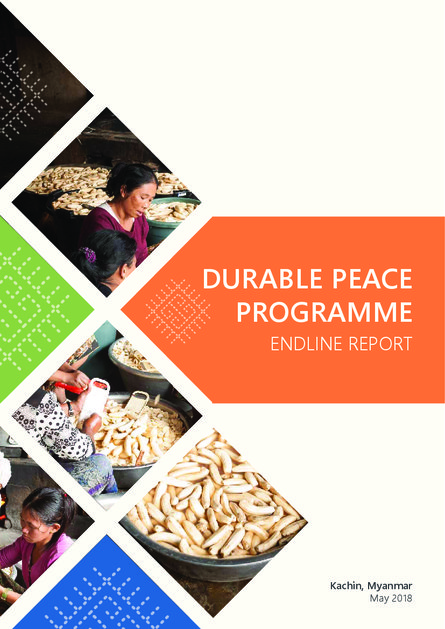
This endline report builds upon the foundations of the Durable Peace Programme’s (DPP) baseline report with two significant years in between data collection.
The baseline data was collected over October and November 2015 – an extremely hopeful time in Myanmar’s recent history. A National Ceasefire Agreement (NCA) had just been signed (albeit not by the KIO/A) and expectations of the peace process were high – as were expectations for landmark democratic elections held on 8 November 2015.
Also conducted over October and November in 2017, the context for the endline data collection was very different. In the past two years, armed conflict has escalated significantly, the peace process has largely stalled and the humanitarian situation has deteriorated for the over 100,000 IDPs in camps, including the re-displacement of over 6,000 IDPs in early-2017 and new displacement in Tanai in mid-2017. It is hoped that the comparative results of the two surveys can stimulate consideration and improved action related to these contextual changes.
The responses to each question provide many insights into the current context. The following are six headline findings but readers are encouraged to look at the complete data and analysis to help inform further understanding of Kachin.
